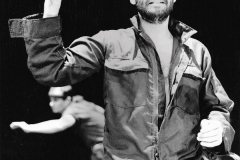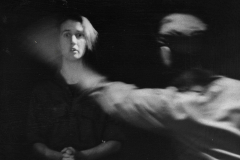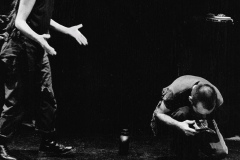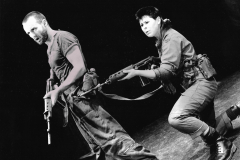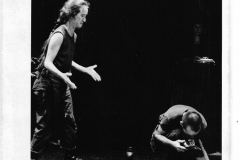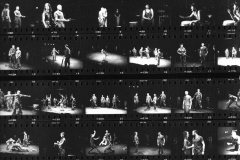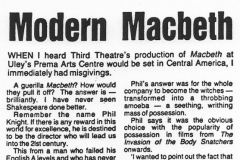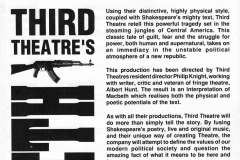The third production was an experiment to try to bring Third Theatre’s unique physical style and rehearsal process to a production of Shakespeare, after a review had mentioned our ‘curious lack of interest in words’ in our highly energetic physical productions.It was not that we were not interested, but so far the process had not been as effective in creating text as it had been in creating presence, character, watchable action, and skilled choreography.
Another problem common to new companies was although we were building a large local audience in West Yorkshire, a reputation for quality work, and some great reviews, we were having difficulty booking more extensive tours in areas of the country that did not know our work. Venues were not willing to risk a new production and a new company, which would be difficult for them to sell to their potential audience. Remember this was the pre-digital age, there was no internet or social media and no videos of our work.
It was perceived that a Shakespeare play might address both problems, force us to engage not only with words but those of probably the finest playwright in the English language, and have a play to sell that people had heard of.
Director, Phil Knight, chose Macbeth because he had wanted to try it for some time and had ideas to fuse the images of modern war films with this powerful text. He wanted to try to inject the play with a contemporary visual language of violence, making it perhaps more accessible to a younger audience (it was a set ‘A Level’ text).
Yorkshire Arts funding was secured to work with a writer at the rehearsal stage to help us improve our relationship with text. Writer, theatre critic, and theatre practitioner, Albert Hunt (Hopes for Great Happenings) agreed to join the project. The play was set in the jungles of South America in recent times. The six actors of the company and a musician were to play all the parts, and it was decided to edit the text as little as possible, only the porters’ jokes were changed to make them humorous to a modern audience, other than that we messed with it very little.
As in all Third Theatre productions the costume was generic and did not denote character, and the same props were carried by each actor, a reproduction SLR rifle (supplied by the National Theatre). This was the first time we had used a prop that was not used to stand for multiple objects, it remained a gun for the whole production. This created problems in the context of Third Theatre’s method of creating a universe for a production the audience could enter, because the rules were fixed. We had real guns and bayonets and water bottles but no bandages or food on the banquet table. Although we struggled with this in rehearsals it wasn’t mentioned in any feedback from the show. Each actor also had a conga drum and we worked with an expert in Cuban and Latin American rhythms, who taught the whole company how to drum alongside the five musicians, who were playing a score written by Mike Gosling.
Toured: 1990
Tour Locations
Theatre in the Mill, Bradford | 11th – 13th October
Gulbenkian Studio Theatre, Hull | 17th-18th October
Priory Street Centre, York | 20th October
North Ridings College, Scarborough | 31st October
Willesden green Library Centre, London | 7th November
West End Centre, Aldershot | 8th November
The Arts Centre, St Austell | 10th November
The Harwich Arts Workshop | 12th November
The Wheelwright Centre, Dewsbury | 13th November
The Woughton Centre, Milton Keynes | 22nd November
The Arts Workshop, Worcester | 24th November
The Prema Arts Centre, Dursley | 30th November


